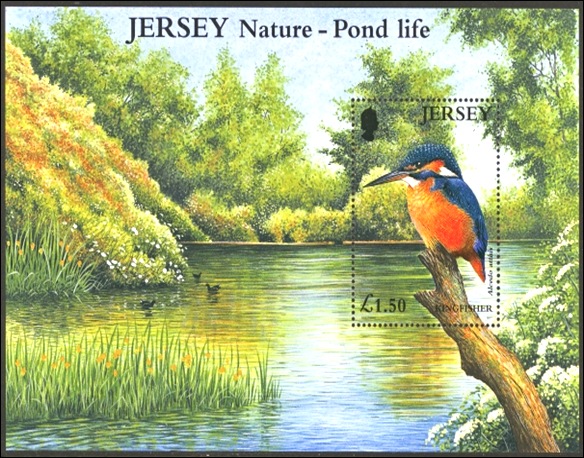Common birds are declining worldwide, providing evidence of a rapid deterioration in the global environment that is affecting all life on earth - including human life.
All the world's governments have committed themselves to slowing or halting the biodiversity loss by 2010. But the reluctance to commit what are often trivial sums in terms of national budgets means that this target will almost certain to be missed. These are some of the stark messages from State of the Worlds Birds, a new publication and website (birdlife.org/sowb) launched at BirdLife International's World Conference in Buenos Aires.
Dr Mike Rands - BirdLife's CEO said "Birds provide an accurate and easy to read environmental barometer, allowing us to see clearly the pressures our current way of life are putting on the world's biodiversity".
The report highlights worldwide losses among widespread and once-familiar birds.
• A staggering 45% of common European birds are declining: the familiar European Turtle-dove Streptopelia turtur, for example, has lost 62% of its population in the last 25 years.
• On the other side of the globe, resident Australian wading birds have seen population losses of 81% in just quarter of a century.
• Twenty North American common birds have more than halved in number in the last four decades. Northern Bobwhite Colinus virginianus fell most dramatically, by 82%. In Latin America, the Yellow Cardinal Gubernatrix cristata - once common in Argentina - is now classified as globally Endangered
• Millions of White-rumped Vultures Gyps bengalensis recently flew in Asian skies. In just sixteen years populations have crashed by 99.9% - the species is now classified as Critically Endangered.
• Widespread birds like the Eurasian Eagle Owl are believed to be vanishing from Middle Eastern forests.
• Seabirds - including Critically Endangered Chatham Albatross Thalassarche eremita - are disappearing from the world's oceans.
"Many of these birds have been a familiar part of our everyday lives, and people who would not necessarily have noticed other environmental indicators have seen their numbers slipping away, and are wondering why" said Dr Rands. "Because birds are found almost everywhere on earth, they can act as our eyes and ears, and what they are telling us is that the deterioration in biodiversity and the environment is accelerating, not slowing."
State of the Worlds Birds identifies many key global threats, including the intensification of industrial-scale agriculture and fishing, the spread of invasive species, logging and the replacement of natural forest with monocultural plantations. However, Dr Rands warns: "In the long term, human-induced climate change may be the most serious stress of all".
The encouraging news is that conservation works and is relatively cheap. Direct action saved 16 bird species from extinction between 1994 and 2004. But conserving biodiversity now urgently needs more financial support.
"Effective biodiversity conservation is easily affordable, requiring relatively trivial sums at the scale of the global economy", said Dr Rands. For example, to maintain the protected area network which would safeguard 90 percent of Africa's biodiversity would cost less than $1 billion US dollars a year -yet in a typical year the global community provides around $300 million.
"The world is failing in its 2010 pledge to achieve a significant reduction in the current rate of loss of biodiversity", said Dr Rands. "The challenge is to harness international biodiversity commitments and ensure that concrete actions are taken - now!"
The report highlights the decline of common European birds. An analysis of 124 of Europe's common birds over a 26-year period reveals that 56 species (45%) have declined across 20 European countries, with farmland birds doing particularly badly. The familiar Common Cuckoo Cuculus canorus has declined by 17%. Furthermore, species such as European Turtle-dove Streptopelia turtur, Grey Partridge Perdix perdix and Corn Bunting Miliaria calandra have dropped by 62%, 79% and 61% respectively.
The story is the same for birds migrating between Europe, the Middle East and Africa. Afro-Palearctic migratory birds have suffered massive (40%) population declines over just three decades. "Birds impacted by agricultural intensification in Europe may also suffer from excessive hunting in the Middle East and desertification of their African wintering grounds. These species are being hit at all stages of their annual journeys", warned Dr Rands. "Common migratory species such as Eurasian Wryneck Jynx torquilla, Northern Wheatear Oenanthe oenanthe, Sedge Warbler Acrocephalus schoenobaenus and Common Nightingale Luscinia megarhynchos are silently disappearing."
The report highlights the decline of common North American birds. In North America, 20 common bird species have suffered population declines of over 50% in the last 40 years.
"Northern Bobwhite Colinus virginianus has declined the most dramatically, with population reductions of 82%", noted Dr Rands. Other widespread species suffering significant declines include Evening Grosbeak Coccothraustes vespertinus (78%), Northern Pintail Anas acuta (77%) and Boreal Chickadee Parus hudsonica (73%).
The story is the same for birds migrating between North and Latin America. "A staggering 57% of Neotropical migrants monitored at their breeding grounds have suffered from population declines over the last four decades", warned Dr Rands. "Migratory species such as the Wilson's Phalarope Steganopus tricolor, Semipalmated Sandpiper Calidris pusilla and Lesser Yellowlegs Tringa flavipes are silently disappearing."
Source: Wildlife Extra News, September 2008
http://www.wildlifeextra.com/go/news/bird-decline.html#cr

- Login om te reageren
